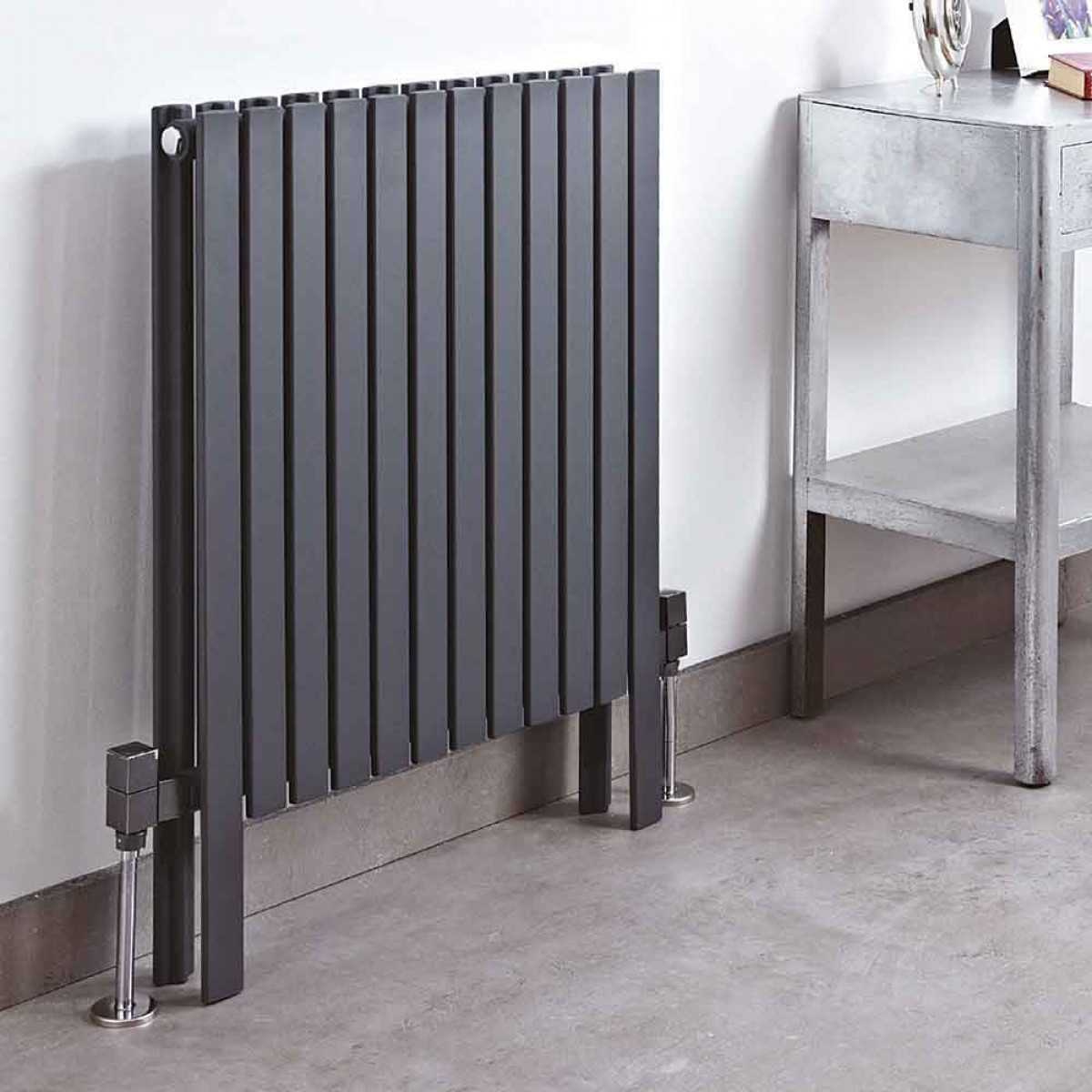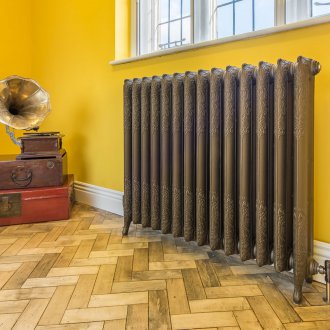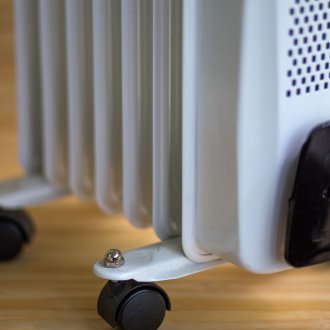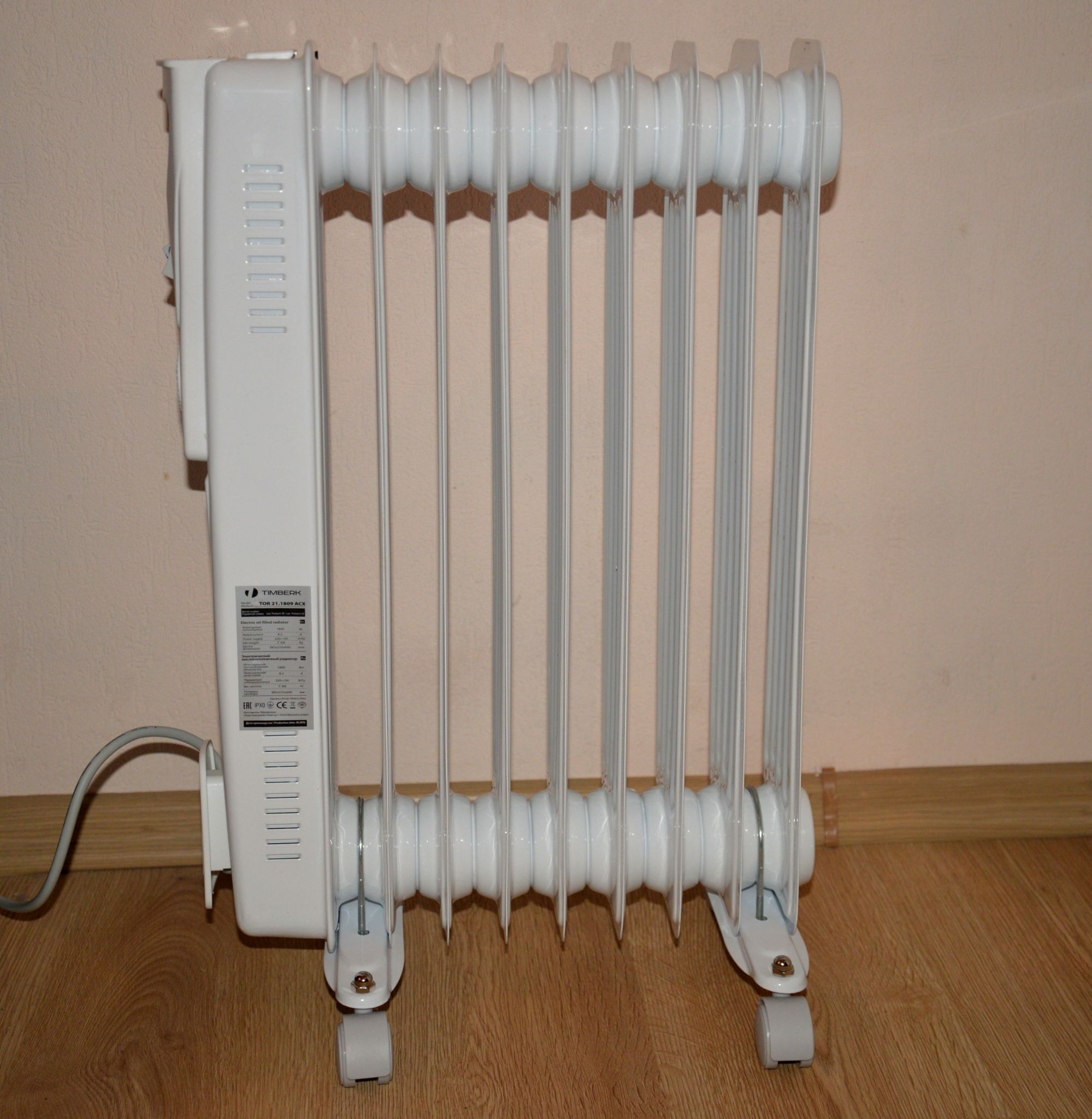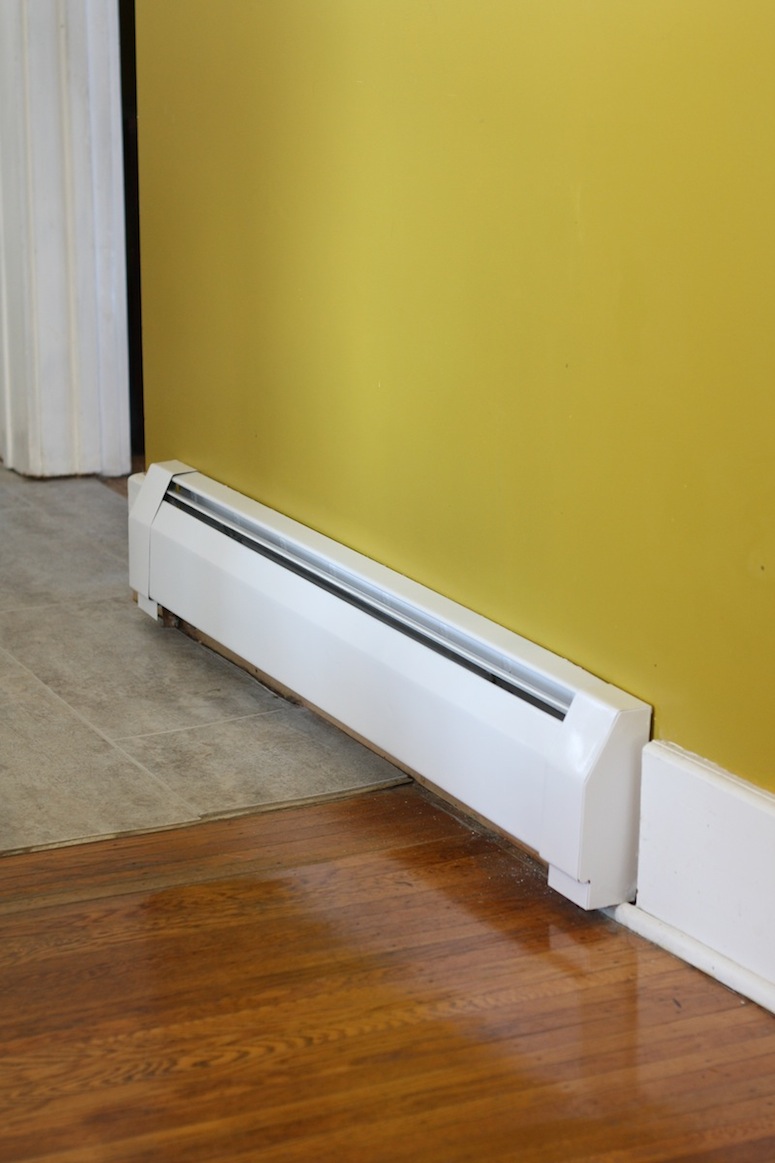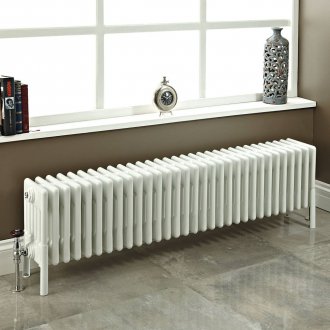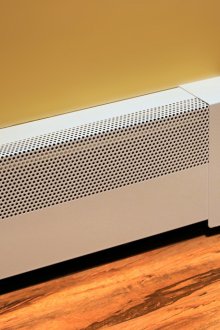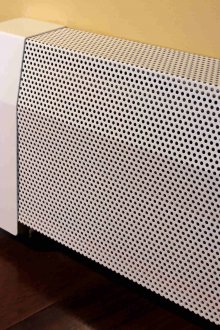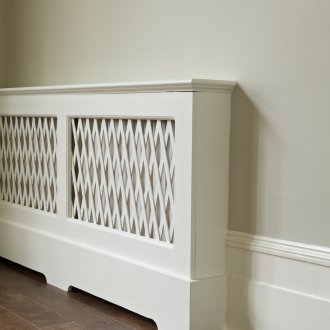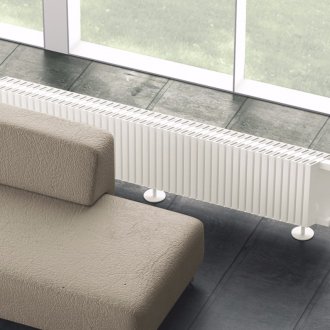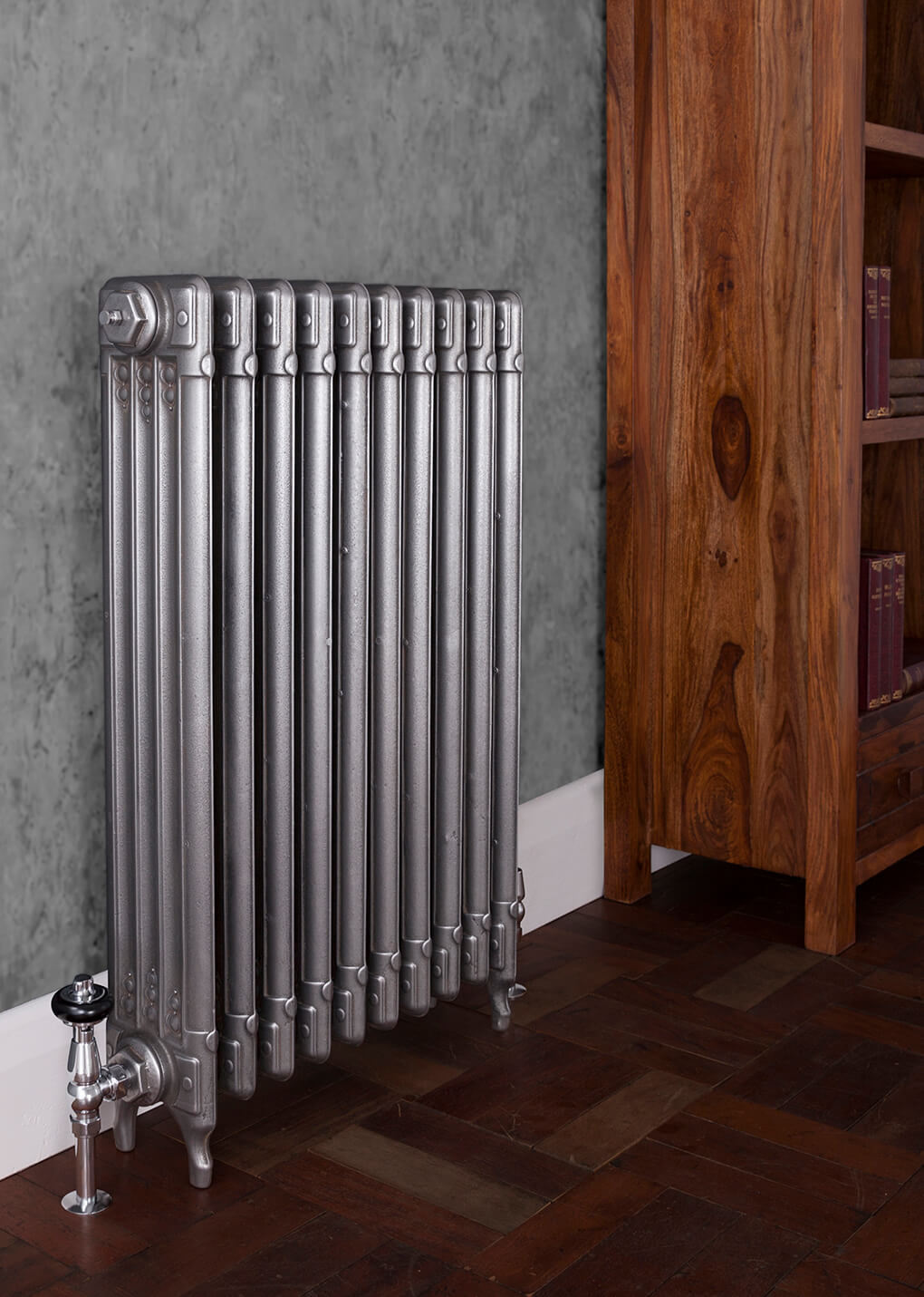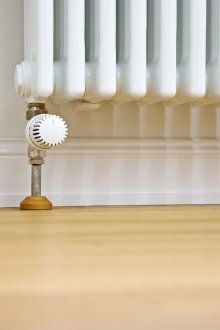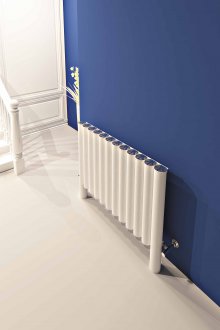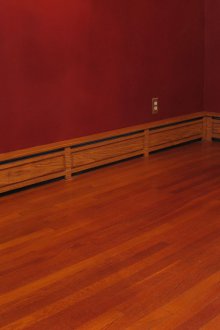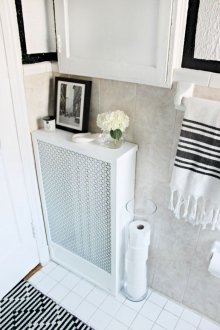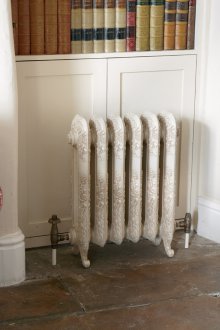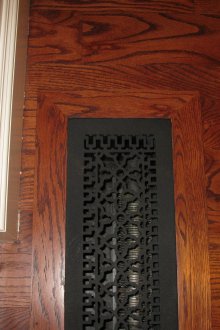Floor radiators: installation methods, advantages and possible cons (22 photos)
Content
- 1 The main types of heating devices
- 2 Floor radiators: advantages and installation features
- 3 Floor-mounted heating devices: the way robots and the advantages of this layout
- 4 Pros and cons of wall-mounted heating systems
- 5 Features of installation and operation of baseboard heating installations
- 6 Steel heating devices
- 7 Aluminum heating systems
- 8 Cast iron heating radiators
- 9 Bimetal radiators
The installation or replacement of heating devices is best taken care of in the summer or early fall, when their replacement will not be critical. The process itself should be approached very carefully, after figuring out which batteries, radiators or convectors will be more useful in terms of efficiency and economy for your home. This article will help ease the choice of type and type of batteries: in it we will try to provide complete and detailed information about the types of radiator heating devices, their main advantages and features of use.
The main types of heating devices
Conventionally, radiator batteries are divided into several types according to the mounting method:
- Floor heating radiators;
- Built in a floor;
- Wall mounted
- Skirting boards.
And for several types of material from which they are made:
- Steel heating installations;
- Aluminum;
- Cast iron radiators;
- Bimetallic.
Floor radiators: advantages and installation features
Interior designers consider this type of heating device to be one of the best, since floor-standing batteries can be masked or discreetly integrated into the surroundings.
Installation of a floor radiator is carried out by means of fastening of bolt type. This easy-to-install mount is characterized by increased reliability and durability.
Since the height and length of the battery can be changed, the floor mount is ideal for shops, offices or houses where there is panoramic glazing or windows located close to the floor. To improve the appearance, floor heating installations are often disguised as objects of interior decoration: for example, they are built into hollow wooden boxes used in the future as seating places. This installation method will look good in the waiting rooms of hospitals and train stations.
Floor-mounted heating devices: the way robots and the advantages of this layout
Floor-mounted water heating systems quickly heat the air passing between the battery plates. The heated air layer rises in a short time, and its place is occupied by heavier cold air currents, so by the way it works it is a conventional convection device. These are the best radiators for panoramic windows: firstly, they are invisible, secondly, they quickly heat large volumes of air, and thirdly, they prevent the entry of external cold air masses.
Pros and cons of wall-mounted heating systems
The main advantage is the ability to install the battery at any height level. The overall stability of the attached structure will depend on the mounting block and the strength of the load-bearing wall.Although manufacturers try to make the units as wear-resistant and durable as possible, they are the ones that most often break and fail, which is why this type of installation of heating batteries is considered the most unreliable.
Features of installation and operation of baseboard heating installations
Two types of components are used for the production of skirting radiators: these are plastic tubes into which hot water will flow and small fins or plates made of various metals in height and width. They install skirting heating devices just below the level of the windows, closer to the floor. This is a good way to warm houses in which windows are very low. For example, it can be used in attic rooms.
When installing skirting radiators, it is worth remembering two important limitations: firstly, the water pressure inside the pipe should not exceed more than three atmospheres, and secondly, water is supplied to them with a temperature of no higher than eighty-five degrees. These nuances are due to the quality of the material of the tubes, if they are neglected, then the plastic will simply burst or crack.
Steel heating devices
Steel, as a material for radiators, is most often used in conventional panel heating installations of floor or wall type. They are the most affordable in price and quite efficient in work. They work like convectors built into the floor: the air between the plates heats up and rises up, and cold air flows come to replace it.
The main advantages of steel heaters:
- Low price;
- Rapid heating of indoor air;
- Economical energy consumption both in electric radiators and in water-type installations;
- To create panel heaters, high-quality and wear-resistant steel is used, so they will last a long time;
- The remaining components are made from environmentally friendly materials.
Disadvantages:
- Water versions of heaters do not tolerate internal water hammer due to the small thickness of the steel walls;
- When draining water during maintenance work, the inner sides of the ribs come in contact with air, due to which they are oxidized and rust appears;
- Since the air heats up very quickly, drafts may appear in the room.
Aluminum heating systems
The first thing you need to know about them is that batteries of this type are used only for stand-alone heating devices due to a number of limitations: they do not withstand the water pressure of the general heating system and are quickly oxidized from the inside due to low-quality water, which leads to internal corrosion surfaces.
According to the production method, aluminum radiators are divided into two types:
- Cast. External plates or ribs are poured from an aluminum alloy;
- Extrusion. Parts of the battery are extruded from a single sheet of aluminum at special factory settings.
The advantages and disadvantages of aluminum heaters are the same, regardless of the manufacturing method. The only thing that cast batteries differ from extrusion models is the price, and the minimum, which is not so important for the end customer.
The main advantages of aluminum heaters:
- Light weight. This is a powerful argument for wall-mounted radiators, so they are usually made of aluminum alloy;
- Good heat dissipation;
- Even large rooms are heated in a short time;
- Since they are used for autonomous heating systems, most models are made with manual adjustment of heat transfer, which is carried out using special controllers.
Disadvantages:
- Fragile material and the risk of internal corrosion lead to a reduction in the life of the equipment: on average, aluminum radiators are used no more than fifteen years;
- The possibility of microcracks and leaks is much higher than that of batteries made from other raw materials;
- Uncontrolled pressure surges or hydroshocks lead to catastrophic consequences.
Cast iron heating radiators
An inexpensive and reliable heating device familiar to all residents of the post-Soviet space: cast-iron floor radiators can be found everywhere. Heavy batteries slowly heat up: weight and heating time are two of the biggest drawbacks. But they serve for a long time, a 50-year term of work for them is the norm. Recently, retro-style cast-iron batteries have become popular, their production and sales have already been established abroad. Such batteries look stylish and beautiful and are able to decorate the interior of many private homes.
The main advantages of cast-iron heaters:
- Long term of operation;
- Resistance to corrosion;
- After shutdown, they retain heat for a long time.
Disadvantages:
- Heavy weight;
- Slowly heat up.
Bimetal radiators
Batteries made of composite material, mainly for the manufacture of steel and aluminum. The first component is for creating internal tubes, the second for external heat-emitting fins. This arrangement allows you to make strong and durable heating installations. Bimetal heating devices are manufactured abroad, so they are quite expensive.
The main advantages of bimetal heaters:
- High heat dissipation;
- Resistance to hydroshocks and surges of internal pressure;
- Economical consumption of heating components;
- Quick installation.
Disadvantages: high cost.
We should also mention autonomous oil coolers. Floor installations of this type do not depend on the public heating system and will be useful in that period of the year when it is not yet turned on. Unfortunately, electric oil batteries consume a lot of energy and cannot be considered economical sources of heating.



